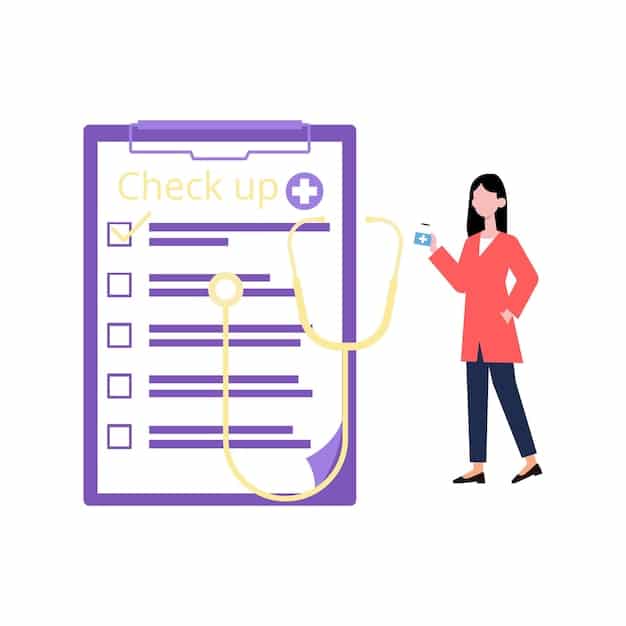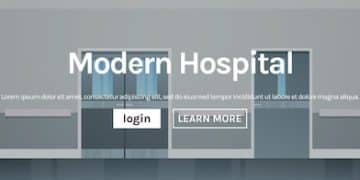Understanding the No Surprises Act: Key Provisions and How to Avoid Penalties

The No Surprises Act protects patients from unexpected medical bills by ensuring they only pay in-network costs for emergency care, certain non-emergency situations, and when seeing out-of-network providers at in-network facilities, with penalties for non-compliance.
Navigating the complexities of healthcare costs can be daunting, especially when faced with unexpected medical bills. The key provisions of the new federal regulations on surprise billing and how you can avoid penalties are crucial for healthcare providers and patients alike. Let’s delve into the details of the No Surprises Act and understand how to protect yourself and your practice.
Understanding the No Surprises Act
The No Surprises Act is a federal law designed to protect patients from surprise medical bills. These bills often arise when patients receive care from out-of-network providers without their knowledge, particularly in emergency situations or at in-network facilities.
The Act aims to ensure that patients only pay what they would have if the care had been provided by an in-network provider. This significantly reduces the financial burden of unexpected medical costs.

Who Does the No Surprises Act Protect?
The No Surprises Act primarily protects individuals with health insurance coverage. It applies to emergency services, as well as certain non-emergency services provided by out-of-network providers at in-network facilities.
Even if you have insurance, the Act ensures that you won’t be charged more than the in-network rate for covered services in these situations.
When Does the Act Apply?
The No Surprises Act applies in several key scenarios:
- Emergency Services: If you receive emergency care at an out-of-network hospital or emergency room, the Act ensures that you’ll only be responsible for the in-network cost-sharing amount.
- Out-of-Network Care at In-Network Facilities: If you receive care from an out-of-network provider at an in-network hospital or facility, such as an anesthesiologist or radiologist, the Act protects you from surprise bills.
- Air Ambulance Services: The Act also addresses surprise bills for air ambulance services, ensuring that patients are not charged exorbitant rates for these critical services.
These protections are essential for patients who may not have the opportunity to choose their providers or negotiate costs in advance.
In summary, the No Surprises Act is a vital piece of legislation that safeguards patients from unexpected and often unaffordable medical bills, ensuring fair and transparent healthcare pricing.
Key Provisions of the No Surprises Act
The No Surprises Act includes several key provisions aimed at protecting patients and ensuring fair billing practices. These provisions cover various aspects of healthcare services, from emergency care to cost transparency.
Understanding these provisions is essential for both patients and healthcare providers to ensure compliance and avoid penalties.
Emergency Services Coverage
One of the primary provisions of the No Surprises Act is the requirement that emergency services be covered at in-network rates, regardless of whether the provider is in-network or out-of-network. This means that if you seek emergency care, you will only be responsible for the in-network cost-sharing amount.
This is particularly important as patients often do not have the opportunity to choose their provider in emergency situations.
Out-of-Network Care at In-Network Facilities
The Act also addresses situations where patients receive care from out-of-network providers while at an in-network facility. This commonly occurs with ancillary services like anesthesiology, radiology, or pathology.
In these cases, the Act ensures that patients are only responsible for the in-network cost-sharing amount, protecting them from surprise bills for these services.
Balance Billing Restrictions
Balance billing, also known as surprise billing, is the practice of charging patients the difference between the provider’s billed charge and the amount their insurance plan pays. The No Surprises Act strictly limits balance billing in the following situations:
- Emergency services
- Certain non-emergency services provided by out-of-network providers at in-network facilities
- Air ambulance services
By restricting balance billing, the Act ensures that patients are not burdened with excessive and unexpected medical costs.
In conclusion, the key provisions of the No Surprises Act provide comprehensive protection against surprise medical bills, ensuring fair and predictable healthcare costs for patients.
How Healthcare Providers Can Avoid Penalties
The No Surprises Act not only protects patients but also places certain obligations on healthcare providers. Providers must take specific steps to comply with the Act and avoid potential penalties.
Understanding and adhering to these guidelines is crucial for maintaining a compliant and patient-friendly practice.

Providing Good Faith Estimates
Healthcare providers are required to provide good faith estimates of the cost of services to patients who are uninsured or who choose not to use their insurance. These estimates must be provided in advance of the service and include a comprehensive breakdown of expected charges.
Providing accurate and transparent good faith estimates helps patients make informed decisions about their care and avoid unexpected bills.
Obtaining Patient Consent
In certain situations, providers must obtain patient consent to waive their protections under the No Surprises Act. This typically applies when a patient knowingly chooses to receive care from an out-of-network provider.
To obtain valid consent, providers must provide clear and understandable information about the potential costs and the patient’s rights under the Act.
Participating in Independent Dispute Resolution (IDR)
The Independent Dispute Resolution (IDR) process is a mechanism for resolving payment disputes between providers and insurers. If a provider and insurer cannot agree on a fair payment amount for services covered under the No Surprises Act, they can initiate the IDR process.
Participating in the IDR process in good faith is essential for complying with the Act and avoiding penalties.
In essence, healthcare providers can avoid penalties by being proactive in providing cost estimates, obtaining informed consent, and engaging in fair dispute resolution practices.
Patient Rights Under the No Surprises Act
The No Surprises Act grants patients significant rights related to healthcare billing and cost transparency. These rights are designed to protect patients from unexpected medical bills and ensure they have access to affordable care.
Knowing your rights under the Act is empowering and can help you navigate the healthcare system with greater confidence.
Right to In-Network Cost Sharing
One of the most important rights granted by the No Surprises Act is the right to pay only the in-network cost-sharing amount for covered services. This means that if you receive emergency care or care from an out-of-network provider at an in-network facility, you will only be responsible for the same deductible, copayment, or coinsurance that you would pay if the provider were in-network.
This provision significantly reduces the potential for surprise medical bills and ensures that patients are not unfairly burdened with excessive costs.
Right to a Good Faith Estimate
Uninsured patients, or those who choose not to use their insurance, have the right to receive a good faith estimate of the cost of services before receiving care. This estimate must include a comprehensive breakdown of expected charges and help patients make informed decisions about their healthcare.
If the actual billed charges substantially exceed the good faith estimate, patients may have recourse to dispute the charges.
Right to Dispute Charges
The No Surprises Act provides patients with the right to dispute charges that they believe violate the Act. If you receive a bill that you believe is incorrect or excessive, you can file a complaint with the appropriate regulatory authorities.
This right ensures that patients have a mechanism for addressing billing errors and holding providers accountable for complying with the Act.
Ultimately, the No Surprises Act empowers patients with crucial rights that promote fairness, transparency, and affordability in healthcare billing practices.
The Independent Dispute Resolution (IDR) Process
The Independent Dispute Resolution (IDR) process is a critical component of the No Surprises Act, designed to resolve payment disputes between healthcare providers and insurers. This process ensures fair reimbursement for services covered under the Act.
Understanding the IDR process is essential for both providers and insurers to navigate payment disagreements effectively.
Initiating the IDR Process
If a provider and insurer cannot agree on a payment amount for services covered under the No Surprises Act, either party can initiate the IDR process. This involves submitting a request for independent resolution to a certified IDR entity.
The request must include relevant documentation, such as the initial bill, the insurer’s payment determination, and any supporting information.
Selection of an IDR Entity
Once a request for IDR is submitted, the parties must jointly select a certified IDR entity to resolve the dispute. If the parties cannot agree on an entity, the Department of Health and Human Services (HHS) will select one on their behalf.
The selected IDR entity must be impartial and have expertise in healthcare billing and payment practices.
IDR Entity Determination
The IDR entity reviews the information submitted by both parties and makes a determination based on several factors, including:
- The median in-network rate for the service in the geographic area
- Information submitted by the provider and insurer
- Any other relevant factors
The IDR entity’s determination is binding on both parties, ensuring a fair and impartial resolution of the payment dispute.
In summary, the Independent Dispute Resolution (IDR) process is a vital mechanism for resolving payment disputes under the No Surprises Act, promoting fair reimbursement and protecting patients from excessive medical bills.
Future Implications of the No Surprises Act
The No Surprises Act has significant implications for the future of healthcare billing and payment practices. Its implementation is expected to drive greater transparency, reduce unexpected medical costs, and promote fairer negotiations between providers and insurers.
As the Act continues to evolve, its impact on the healthcare landscape will become increasingly evident.
Increased Price Transparency
One of the key outcomes of the No Surprises Act is increased price transparency in healthcare. The requirement for good faith estimates and the availability of the IDR process encourage providers and insurers to be more upfront about costs.
This transparency can help patients make more informed decisions about their care and reduce the likelihood of surprise bills.
Reduced Financial Burden on Patients
By protecting patients from surprise medical bills, the No Surprises Act is expected to significantly reduce the financial burden of healthcare. Patients will no longer have to worry about receiving exorbitant bills for emergency services or out-of-network care at in-network facilities.
This can improve access to care and reduce the likelihood of medical debt.
Shift in Negotiation Dynamics
The No Surprises Act is also expected to shift the negotiation dynamics between providers and insurers. The IDR process provides a framework for resolving payment disputes and encourages both parties to negotiate in good faith.
This can lead to fairer reimbursement rates and a more stable healthcare market.
In conclusion, the No Surprises Act is poised to have a lasting impact on the future of healthcare, promoting transparency, affordability, and fairness in billing and payment practices.
| Key Point | Brief Description |
|---|---|
| 🏥 Emergency Care | Covered at in-network rates even out-of-network. |
| ⚕️ Out-of-Network at In-Network | In-network cost-sharing applies. |
| ⚖️ Independent Dispute Resolution | Mechanism to resolve payment disagreements. |
| 🧾 Good Faith Estimates | Providers must offer estimates to uninsured patients. |
Frequently Asked Questions
▼
The main goal is to protect patients from unexpected medical bills by ensuring they pay in-network costs in emergency and certain non-emergency situations.
▼
The Act primarily protects individuals with health insurance coverage and applies to emergency and some non-emergency services.
▼
Good faith estimates are cost breakdowns given to uninsured patients before care to help them make informed healthcare decisions, thus avoiding surprises.
▼
The IDR is initiated when providers and insurers can’t agree on payment, leading to an independent review to set a fair reimbursement rate.
▼
If a bill seems incorrect, file a complaint with the regulatory authorities to dispute the charge, ensuring compliance with the Act.
Conclusion
The No Surprises Act represents a significant step forward in protecting patients from unexpected medical bills and promoting transparency in healthcare pricing. By understanding the key provisions of the Act and adhering to its guidelines, both patients and healthcare providers can navigate the complexities of healthcare billing with greater confidence and fairness.





